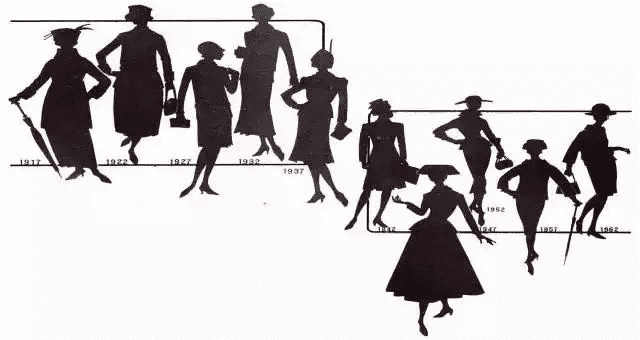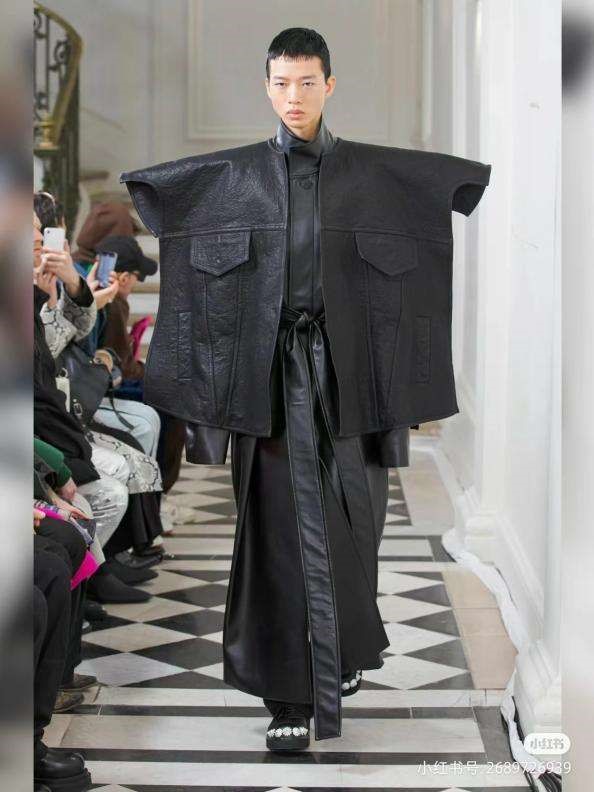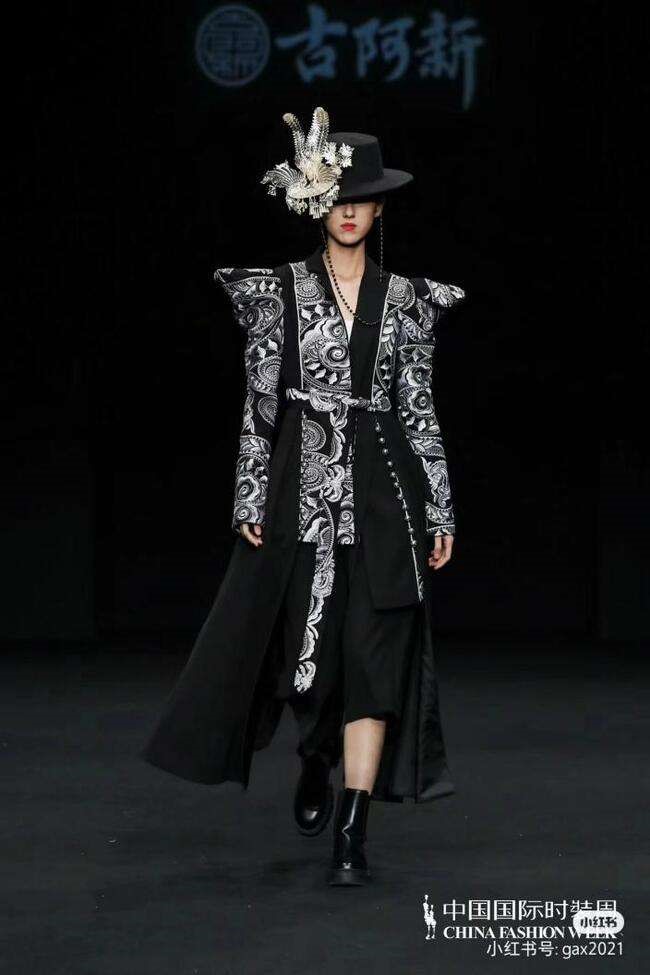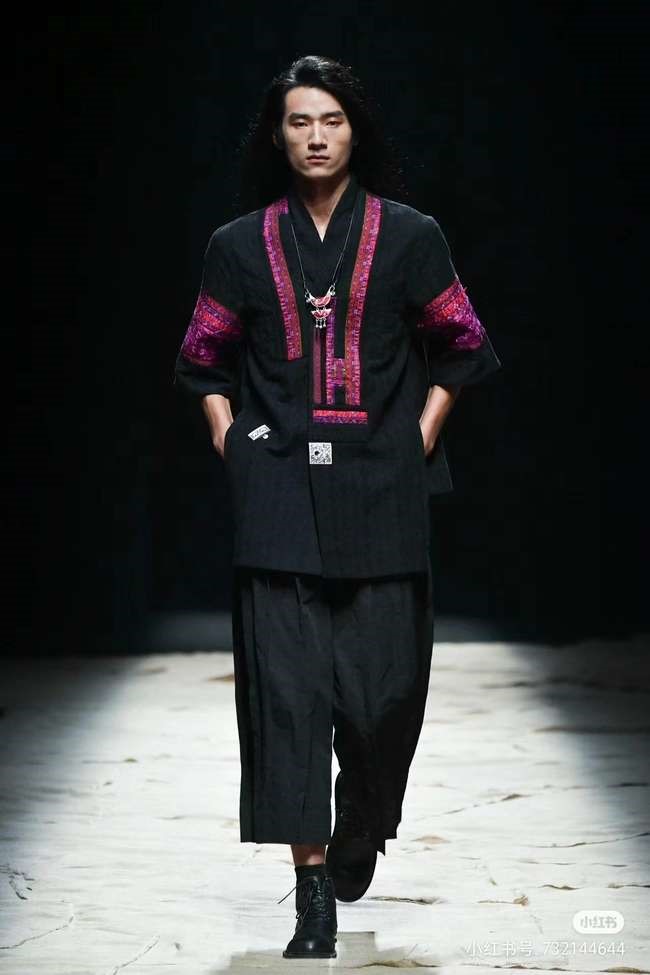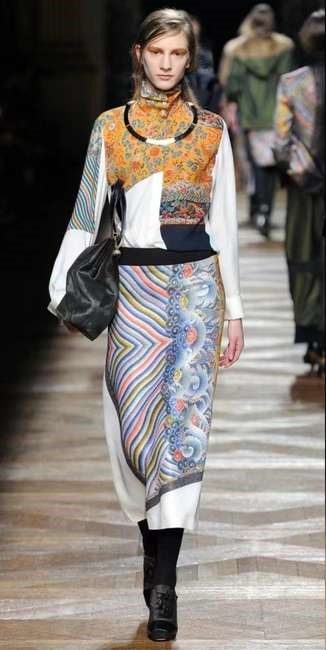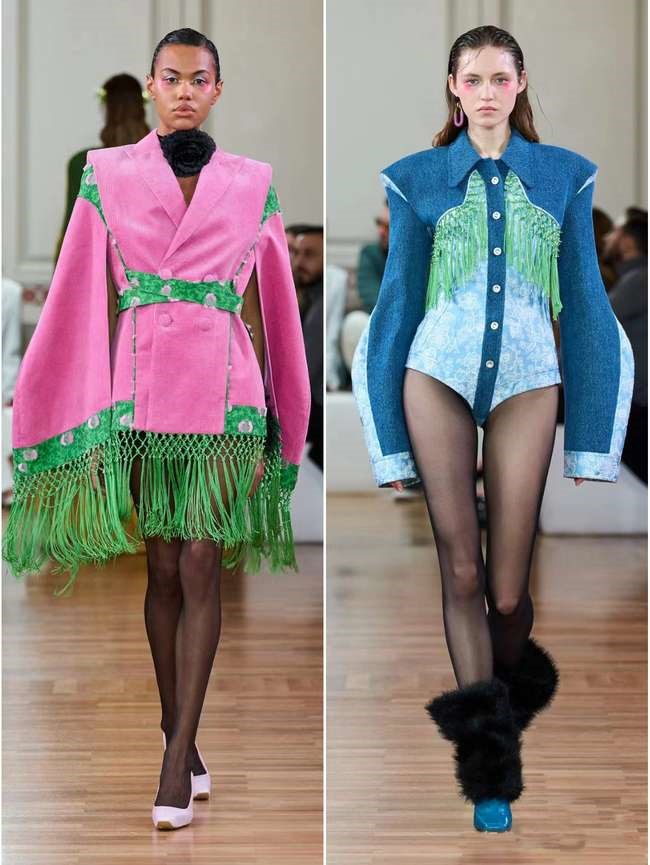Exploring the Expression of Deconstructionism in Chinese National Costume Design
- Tao Meng
- Zainudin Bin MD NOR
- Jing Zhong
- 647-654
- Jun 3, 2024
- Cultural Studies
Exploring the Expression of Deconstructionism in Chinese National Costume Design
Tao Meng*, Zainudin Bin MD NOR, Jing Zhong
College of Creative Arts, Universiti Teknologi, Malaysia, Bandar Seri Iskandar, Perak, 32610, Malaysia.
*Corresponding Authors
DOI: https://dx.doi.org/10.47772/IJRISS.2024.805047
Received: 16 April 2024; Revised: 26 April 2024; Accepted: 30 April 2024; Published: 03 June 2024
ABSTRACT
In the mid-20th century, the concept of deconstructionism was first proposed in the field of philosophy. Its emergence subverted entrenched notions and cognitions of traditional structures, fostering a novel mode of anti-traditional thinking. Within the realm of fashion, deconstructionism primarily manifests in breaking the taboos of traditional attire, rendering aesthetic standards more diverse. Designers are empowered to transcend conventional design boundaries in both thought and form, thereby crafting works imbued with greater tension and contradiction.
With a history spanning 5000 years, China has witnessed the emergence of numerous distinct traditional garments. The imperative task facing every Chinese designer is how to inherit and evolve these historically significant ethnic attires. Contemporary ethnic-style garment design transcends mere clothing production; it constitutes an endeavor concerning the perpetuation and evolution of ethnic attire and sentiment. Deconstruction serves as a method of garment design, yet it is the national sentiment of the Chinese people that embodies the ultimate essence requiring dissemination and expression in design.
The central inquiry of this paper revolves around how to integrate this internationalized deconstruction design method with Chinese traditional attire, thereby endowing traditional clothing with renewed vitality. In the course of this study, a qualitative research approach is predominantly employed. Through comparative analysis of exemplary works of Chinese ethnic-style garment design from both domestic and international sources, the application outcomes of deconstructionism in garment silhouette, pattern, and detail elements are derived. Utilizing structural methods in garment design not only yields innovative stylistic structures but also furnishes additional design insights and space for the future development of ethnic garment design.
Keywords – Deconstructionism, Ethnic Costumes
INTRODUCTION
“Deconstructionism” initially emerged within the field of philosophy and later expanded into linguistics, literature, and the arts, being regarded as the onset of postmodern civilization. As a significant offshoot of structuralism, deconstructionism is an ideology distilled from the backdrop of postmodern civilization, embodying a particular design style and spirit.(Cheng & JianZhong, 2021)
Deconstructionism is not a faction, nor is it a mere symbol; rather, it embodies a radical aspect, aimed at discovery, particularly about ourselves. Consequently, deconstructionism largely encompasses significant individuality, arbitrariness, and expressiveness. As a novel design mindset and style, deconstructionism is widely employed in the field of design today. Specifically within the realm of fashion, numerous distinctive works and designers embodying deconstructionist principles have emerged in various regions.
Within the context of China, research on the design related to Chinese ethnic culture has become a pivotal topic in the 21st-century Chinese design community. Particularly, the rich and vibrant array of ethnic garments harbors immense potential. This study primarily focuses on how to integrate the currently fashionable deconstructionist style, prevalent in the fashion world, into the design of ethnic attire, ensuring both international appeal and the preservation of Chinese characteristics.
RESEARCH AIM
The study aims to explore the application of deconstructionist techniques in clothing design, focusing on the deconstruction of patterns, details, and silhouette elements. Through the analysis of case studies from both domestic and international fashion collections, the study seeks to identify and categorize the methods used in deconstructing these elements. By examining how designers dismantle and reassemble patterns, swap conventional positions of elements, and merge unrelated elements to achieve artistic effects, the study aims to contribute to a deeper understanding of deconstructionism in fashion design and provide insights for designers seeking to integrate this approach into their creative processes.
RESEARCH QUESTION
- What is the specific manifestation of deconstructionist design techniques in ethnic style clothing design, given the rapid development of the fashion industry today?
- How to enrich traditional clothing with new vitality while retaining the typical characteristics of ethnic clothing?
LITERATURE REVIEW
The meaning of deconstructionism
Deconstructionism originally refers to the disruption and dismantling of existing structures, thereby giving rise to a wholly new form and structure. The term “deconstructionism” evolves from “structuralism,” representing, in essence, the disruption and dismantling of structuralist principles.(Jie, 2004)It is evident from this that the concept of deconstructionism entails a negation of existing structures, orders, and ideologies. By means of dismantling and breaking down traditional notions and structures, deconstructionism recombines these new elements to generate novel styles. The design philosophy of deconstructionism adopts a critical stance towards traditional aesthetics, logically refuting the aesthetic value of rational unity. In design, deconstructionism leads works to present a state of intricate opposition. However, this conflict paradoxically achieves an aesthetic effect that is aptly contrary.(Lianghongyi, 2024) The birth of deconstructionism not only introduced a groundbreaking concept to the field of philosophy but also holds indispensable significance in the realm of design. Its influence on fashion is particularly profound, as deconstructionism has brought about a revolutionary design mindset and approach for clothing designers.
The Application of Deconstructionism in Fashion Design
Deconstructionism advocates the use of exaggeration and imbalance in artistic creation, resulting in works that often possess profound cultural connotations.(Litongchang, 2022)Deconstructionist fashion designers are not just destroyers of structure; they are also reformers and innovators of structure.(JinXi & FengYao, 2018)The most notable characteristic of deconstructionist fashion is the construction of space between clothing and the body. In clothing design, breaking down and dismantling the basic elements of clothing structure before recombining them can result in new structures, such as altering the way clothing is worn: wearing innerwear as outerwear, swapping tops and bottoms, layering, and incorporating dislocated interplay.(XiaoWei & Li, 2023)
Currently, most literature focuses on researching the specific application of deconstructionism in clothing design, while overlooking the integration of each country’s most representative ethnic attire with deconstructionism. Particularly in China, the rich and diverse ethnic garments provide ample inspiration for designers, and many ethnic-style clothing design works also incorporate the methods of deconstructionist clothing design.
METHODOLOGY
To address the research problem, this study primarily adopts a qualitative research method, comparing and analyzing excellent works of Chinese ethnic-style clothing design from both domestic and international sources as case studies.
Research data is collected through online and literature searches, gathering classic Chinese ethnic-style clothing design works from both domestic and international sources. These data include both image and textual information. The image data of classic ethnic-style clothing design works from domestic and international sources are categorized, analyzed, and compared with relevant textual content on ethnic-style clothing design found in various literature sources. These comparisons are organized into comparable data to seek clues. Detailed case descriptions are compiled for each case study, followed by comparisons between cases. After in-depth analysis of the case data, similarities and differences between cases are identified. Through extensive comparative analysis of design cases, the main aspects of deconstructionism in ethnic-style clothing design are identified.Subsequently, specific design techniques applied in each main aspect are compiled and analyzed, ultimately validating the feasibility of deconstructionism in ethnic-style clothing design. The practical application of deconstructionism in clothing design not only provides new directions and perspectives for researching the artistic characteristics of ethnic clothing but also offers more possibilities for ethnic-style clothing design.
RESEARCH PROCESS AND FINDINGS
The deconstructionist design approach primarily employs unconventional, reverse-thinking methods to deconstruct and reassemble the structure of clothing. It logically refutes traditional basic design principles, emphasizing fragmentation, overlay, and recombination, while also valuing individual components. By breaking order and recreating a more rational order, it unleashes infinite possibilities. This study combines classic deconstructionist ethnic-style clothing design cases from both domestic and international sources, focusing on analyzing the expressive techniques of deconstructionism in terms of form, pattern, and detail elements. It further expands designers’ design thinking and provides more theoretical foundations for the subsequent application of deconstructionism in ethnic-style clothing design.
Deconstruction of clothing outer silhouette
The structural form of clothing serves as the foundation of clothing design, primarily composed of the outer silhouette and inner structure of garments. Particularly, the outer silhouette plays a decisive role in determining the overall style of the clothing. Throughout the evolution of clothing over the past century, changes in the outer silhouette directly reflect shifts in the overall appearance of garments.(Feng & Yue, 2019) Throughout the change of clothing in the 20th century, the change of the outer contour directly reflects the change of the overall style of clothing. (Figure 1)
Figure 1. Changes in the silhouette of women’s clothing in the 20th century
The four key areas that have the greatest impact on the design of clothing silhouettes are the shoulders, waist, hips, and hemline of the garment. These crucial areas determine the variations in the garment’s silhouette. In traditional Western aesthetics, emphasis is placed on accentuating the gender differences between men and women, with designs aimed at highlighting these distinctions as much as possible. This aesthetic approach has influenced designers worldwide. However, the emergence of deconstructionism has disrupted this traditional aesthetic and design concept.
For instance, in the SEAN SUEN Fall/Winter 2023 collection, the designer drew inspiration from the vast Liangshan Mountains in Sichuan Province, China. The designer incorporated traditional elements of clothing worn by the Yi ethnic minority group from the Liangshan Mountains. By combining the Yi ethnic group’s traditional cloak used for warmth with modern tailoring techniques and materials such as leather and wool, the designer not only broke away from conventional clothing silhouettes but also captured the essence of the ethnic group’s primitive lifestyle and aspirations.(Figure2)
Figure 2. SEAN SUEN’s Autumn/Winter 2023 collection
Deconstruction of clothing pattern
Deconstructing clothing patterns involves applying deconstructive techniques to disrupt existing patterns while retaining their basic elements. This approach breaks away from the notion of preserving the pristine and harmonious overall impression of the pattern. Alternatively, various crafting methods are employed to reassemble patterns that were originally unrelated, allowing for the fusion of avant-garde with tradition and the integration of the future with the past in clothing design. (Jia & Hui, 2019)
At the Goua Xin’s “Everything has a Soul” launch event, the traditional butterfly pattern of the Miao ethnic group was deconstructed and then applied to the overall design through Miao embroidery techniques. Similarly, the inspiration for the Pastoral Poetry Spring/Summer 2024 collection also derives from Miao culture. The embroidered patches featuring traditional Miao patterns were dismantled into smaller pieces and reassembled for use in the design of the tops. Additionally, square silver clasps crafted from Miao silver ornaments were used as embellishments. The lower half of the ensemble drew inspiration from the pleated skirts of the Miao people, creating skirts with pleated cuffs that exude both rich Miao cultural essence and practical wearability.
In Dries Van Noten’s Fall/Winter 2012 collection, deconstructionist techniques were similarly employed. The designer combined completely different patterns such as cloud motifs, dragon motifs, and tidal patterns by means of segmentation and piecing together, resulting in a diverse pattern style.(Figure5)
Figure 3.Goua Xin’s Design works
Figure 4. Pastoral Poetry’s Spring/Summer 2024 collection
Figure 5. Dries Van Noten’s Autumn/Winter 2012 collection
Through these examples, two main techniques of pattern deconstruction can be observed. Firstly, there is the approach of dismantling complete patterns, breaking their original form, and then reapplying them. Secondly, there is the method of merging unrelated patterns through various piecing techniques to achieve a rich and vibrant artistic effect.
Deconstruction of clothing detail elements
In deconstructing clothing detail elements, the primary approach involves dismantling and reassembling different elements or swapping their conventional positions. For instance, in Sara Wong’s Fall/Winter 2023 collection, inspired by the Kunqu Opera masterpiece “The Peony Pavilion,” she combines the intricate lattice patterns of Jiangnan gardens with elements commonly found in Kunqu Opera costumes, such as water sleeves, cloud shoulders, and tassels. The tassel elements, typically used as embellishments under cloud shoulders, are instead utilized at the bottom of sleeves resembling water sleeves or at structural seams on the front panels of coats. The fusion of Western silhouettes with Chinese elements offers a fresh perspective on the aesthetics of both cultures, seeking a balance and integration between them.(Figure 6)
Figure 6. Sara Wong’s design for Autumn/Winter 2023 collection
CONCLUSION
China possesses a unique ethnic culture and a long-standing history. However, in today’s era of globalization and diversity, many ethnic characteristics may become increasingly diluted, leading to a trend of homogenization. Preserving the cultural elements and styles of one’s own ethnicity in clothing design is one of the challenges that many Chinese designers must confront. The deconstructionist design approach provides an excellent choice in this regard, offering designers a broader space and more options for reexamining ethnic-style clothing design.
From an innovative perspective, the deconstructionist design approach aligns with the current demands for diversity and uniqueness in clothing. Deconstructionism advocates for transformation from different dimensions, allowing for the overlay of elements and the shaping of individuality, resulting in works that are unique artistic creations, showcasing their optimal state. Only in this way can designers create ethnic-style fashion garments that are both rich in Chinese characteristics and aligned with the trends of the times.
REFERENCES
- Cheng, T., & JianZhong, L. (2021). Exploration of the application of deconstructionism in modern clothing design. West Leather, 43(18), 2.
- Jie, S. (2004). Deconstruetion of Fashion Garment. Journal of Zhejiang Engineering College(003), 021.
- Lianghongyi. (2024). Research on Innovative Application of Deconstructive Design Techniques in Fashion Design. Art Market, 8(4), 8.
- Litongchang. (2022). Research on the Application of Deconstructionism in Fashion Design. Textile Reports, 41(9), 63-65.
- JinXi, J., & FengYao, Z. (2018). The Application of Deconstruction in Fashion Design. Journal of Zhejiang Textile and Garment Vocational and Technical College, 17(2), 5.
- XiaoWei, W., & Li, Z. (2023). The Design Method of Clothing Deconstruction Based on Splitting and Reorganization. Shandong Textile Science & Technology, 64(3), 44-47.
- Feng, L. Y., & Yue, H. (2019). Fashion Art Design: China Textile Press Co.
- Jia, W. J., & Hui, W. T. (2019). Application and Expression of Deconstruction in Modern Fashion Design. Progress in Textile Science & Technology(12), 3.


